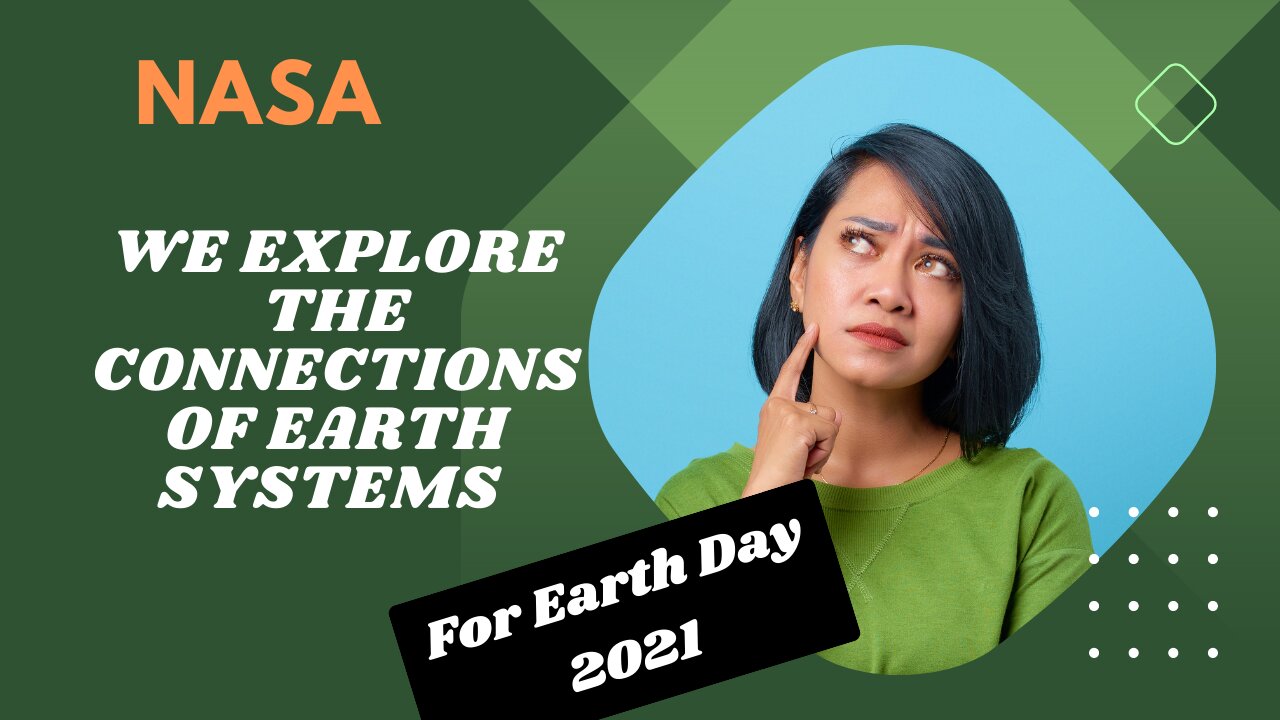Premium Only Content

Earth Day 2021 focused on exploring the interconnectedness of Earth systems and NASA's role
Dust Transport and Vegetation:
Dust can have a significant impact on vegetation health and distribution. Dust particles can carry nutrients and minerals that are essential for plant growth across long distances. This process, known as "dust fertilization," can influence vegetation patterns and ecosystem dynamics. NASA's observations help monitor dust transport and its interactions with vegetation to better understand these relationships.
Water Quality and Conservation:
Water quality is closely tied to the health of aquatic ecosystems and human well-being. NASA's remote sensing technologies play a crucial role in monitoring water quality by assessing parameters such as water temperature, turbidity, and nutrient concentrations. This information aids in the conservation and management of water resources, helping to ensure sustainable water supplies for both natural systems and human populations.
Human Health:
The quality of the environment, including air and water, directly impacts human health. Dust, air pollutants, and water contaminants can have adverse effects on respiratory and cardiovascular health. NASA's ability to monitor and forecast these pollutants provides valuable information for public health organizations and policymakers to take appropriate measures to mitigate health risks.
Cryosphere:
The cryosphere includes polar ice sheets, glaciers, sea ice, and snow cover. Changes in the cryosphere have profound effects on sea level rise, ocean circulation, and global climate patterns. NASA's satellite observations provide critical data on the extent and thickness of ice, helping scientists understand how the cryosphere responds to changing climate conditions.
Disasters:
Natural disasters, such as hurricanes, wildfires, and earthquakes, can have devastating impacts on ecosystems and communities. NASA's Earth observation capabilities assist in disaster monitoring, prediction, and response. Satellite data help track the development of storms, monitor fire and flood extent, and assess the aftermath of disasters, enabling better disaster management and response strategies.
The overarching message of Earth Day 2021 was to highlight the intricate connections between these Earth systems and the role of NASA's Earth science programs in observing and understanding these interactions. By studying these connections, scientists and policymakers can make informed decisions to address environmental challenges and promote sustainable practices to protect our planet's health and well-being.
-
 LIVE
LIVE
BonginoReport
2 hours agoVictory Over Marxism: BLM Plaza Falls (Ep.157) - 03/11/2025
12,737 watching -
 LIVE
LIVE
Dear America
11 hours agoMassive Cyberattack Against Elon's X Sparks Widespread CONCERN! + More Attacks On Tesla Vehicles?!
6,629 watching -
 LIVE
LIVE
Wendy Bell Radio
4 hours agoOver The Target
12,074 watching -
 LIVE
LIVE
Bitcoin Policy Institute
1 hour agoBitcoin for America
638 watching -
 34:43
34:43
Degenerate Jay
23 hours ago $2.60 earnedAssassin's Creed Was Always Anti-Religion?
21.5K4 -
 6:41
6:41
Silver Dragons
18 hours agoCanadian Silver Maple Leaf Coins - Dealer Reveals Everything You NEED to Know
14.3K2 -
 8:42
8:42
Dangerous Freedom
16 hours ago $2.07 earnedThe M&P Competitor SHREDS—But Did Smith & Wesson Screw It Up?
18.8K2 -
 1:12:50
1:12:50
MTNTOUGH Fitness Lab
17 hours agoSTOP Living in Fear: Why Some People Rise From Tragedy AND OTHERS DON'T | Ryan Manion
13.7K -
 8:03
8:03
Alabama Arsenal
1 day ago $0.86 earnedWoox Bravado | Modern Features Meet Timeless Style
20.1K1 -
 2:49:10
2:49:10
TimcastIRL
14 hours agoElon Musk Says X Hit By MASSIVE Cyberattack From Ukraine, Rumble Hit Too w/Ben Davidson| Timcast IRL
263K134